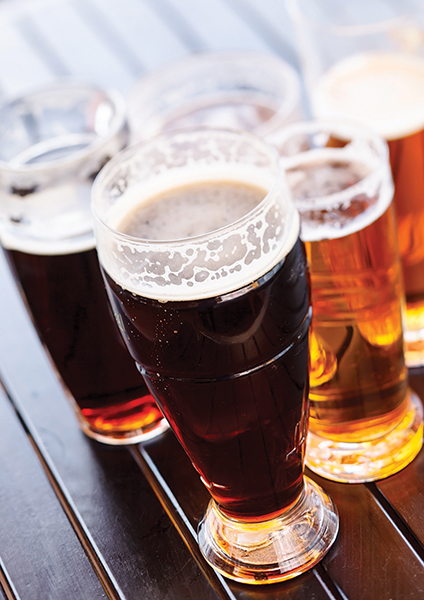
By Jack Kenny

Jack Kenny, Beer Columnist
The origin of the name porter, given to the brown beer born in London in the early 18th century, comes directly from the porters, those who unloaded ships and carried the heavy loads across the city. History records that divisions and subdivisions existed among this hardy breed of men. They included those who carried grain, coal and salt, letters, parcels and manufactured goods, like beer.
Porters needed nourishment, particularly in the form of carbohydrates. The fuel was mostly liquid. They flocked throughout the day to pubs that welcomed them with outdoor seating and tables for their loads. There they were served “deep draughts of stout … such as are idealized in Hogarth’s Beer Street.” Stout meant the stout porter, black and extra strong.
The Brewers Association publishes style information about all beers, including brown and robust porters. The former “are dark brown to very dark. Fruity-ester aroma is acceptable. Hop aroma is negligible to medium. No strong roast barley or strong burnt/black malt character should be perceived. Low to medium malt sweetness, caramel and chocolate is acceptable. Hop flavor is negligible to medium. Hop bitterness is medium. Fruity-ester flavors are acceptable. Body is low to medium.” The alcohol level ranges from 4.4% to 6%.
Robust porters are very dark to black, and feature caramel and other malty sweetness “in harmony with a sharp bitterness of black malt without a highly burnt/charcoal flavor. Hop flavor is very low to medium. Hop bitterness is medium to high. Fruity esters should be evident, balanced with all other characters. Body is medium to full.” The ABV is 5.1% to 6.6%.
The history of porter since the late 1700s is fairly well chronicled. Porters were the first beers to be aged by the brewers; others had been sold “green” to the publicans, who did the aging.
Early porters were stronger than those that evolved into the 20th century. The decrease in strength was a direct result of taxation on barley malt, starting with the Napoleonic Wars in the early 19th century. Two inventions – the thermometer and the hydrometer –gave brewers deeper insight into their methods and chemistry, and they were able to lower malt proportions (and add coloring) to reduce their tax outlay. When that practice was curtailed by law, they were faced with financial strain until the invention of black malt, a seriously kilned product they called “patent,” which enabled the ale to be brewed with 95% pale malt and 5% of the new stuff.
About 200 years ago the brewers happened upon another truth: They didn’t have to age all of the beer. If they combined one part of long-aged porter with two parts of fresh porter, they would achieve the same flavor result. This, too, was an economic advantage.
The English brewed Baltic porters for folks in the region of northern Europe, who liked their beers strong and big-bodied. The name for this style evolved into imperial stout. Porters also traveled to North America where they competed with German lagers.
Interest in porters declined through the 19th century and into the 20th. By World War I and Prohibition, Americans had lost their taste for it. Stouts completely took over porter in England by 1940. The Irish hung on the longest: Guinness produced its last porter in 1974.
Turns out it was just moribund, not bereft of life. California’s Anchor Brewing launched a porter in 1972 (the robust kind), and British brewers followed in 1979. Today it maintains a respected place in the style pantheon, and forms the base for a wide range of substyles, such as vanilla, smoked and pumpkin porters.
How does porter differ from stout? This is a big question in the beer world, and not easily answered. But I’ll let Bob Brewer (yes, that’s his real name) of Anchor Brewing take the floor here:
“The easy answers are ‘not much’ or ‘depends on who you ask.’ There are more stylistic crossovers and intertwined history between modern stouts and porters than among any other two beer styles. Consider the evolution of brewing along with international variants, throw in the craft brewers with their interpretations, and spice up the whole equation with our vibrant and creative home brewing community, and we have style lines that almost defy description. The main difference between the broader styles today seems to be that stouts are drier and toastier, and porters are more malty and full-bodied.”
Jack Kenny has been writing the Beer Column for The Beverage Journal since 1995. Write to him at thebeercolumn@gmail.com.



